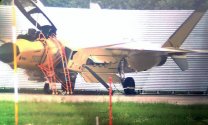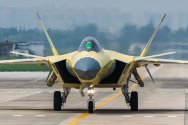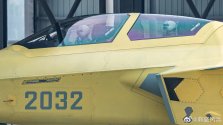You are using an out of date browser. It may not display this or other websites correctly.
You should upgrade or use an alternative browser.
You should upgrade or use an alternative browser.
J-20 5th Generation Fighter VII
- Thread starter siegecrossbow
- Start date
- Status
- Not open for further replies.
uhmmm, so side bay still exist...
Does it have a pitot tube?
Pitot tubes are pretty hilarious, eh @Loveleenkr? What's the saying--show a fool a finger pitot tube?...
Care to remind me? If there's anything I consistently advocate it's to always hold marketing claims against concrete engineering solutions to judge whether they hold water.
Spars by definition are spanwise. It might be the main landing gear stub spar based on size, and that would be a very highly loaded part, but why would you not just use a one-piece titanium forging (Tu-204 shown for reference*)?
View attachment 91965
(Possible answer: time and cost - not likely weight and strength though)
But if nobody else is doing it, despite evidently having the ability, the engineering and science do speak quite eloquently for themselves, do they not? Disruption is real, but invariably linked to specific enabling solutions that remove road blocks which hitherto prevented adoption of a certain technology. Similar story with the oft-touted potential from distributed propulsion in electric aircraft - could've been done before without electrics, but didn't buy its way onto mainstream aircraft. So why assume it'll magically work better now?
(Another, perhaps even more pertinent, example of distributed propulsion by mechanical means which doesn't get mentioned is the Breguet 941)
These enablers need not even be truly novel (a characteristic of Elon Musk's ventures is that they're based on cleverly combining mature technologies in new ways and applications), but they can be named. So what's the secret that enables SAC/CAC to do with 3D printing what nobody else is doing? Let the engineering and science speak, I'm all for it!
This is bass-ackwards. The limitations of metal 3D printing are most definitely NOT conjecture - again, it's therefore on its proponents to provide the detailed and specific answers to how it *can* match forged material properties after all. I'm not going to write a paper in an online forum, but 3D printing, very basically, uses selective, layered deposition of melted metal feedstock. Which ever way you cut it, the effect on grain flow from mechanical forces during forging is lacking entirely.
Unless of course we are talking about something like Arconic's Ampliforge process when we say post printing treatment . If we all agree that "conventional" machined forgings aren't cast parts (despite ultimately stemming from a cast ingot) though, what's the basis for considering an Ampliforge part a 3D printing? In effect, we've merely replaced the cast ingot with a near-net-shape 3D printed blank, in the end it's still a machined forging, right? And it is the forging process which endows it with its strength, and the machining which is responsible for its weight - 3D printing the blank merely saved time and money.
Well, marketing is the incentive for pretending it's something radically different from a established practice, and in that the lead times are going to be cut dramatically, I can even see some justification in it here. But where's the weight saving - the end result is pretty much identical? That's the problem with marketing that lacks any reference to the specifics of the technology, people take it and run with it, they make assumptions and then you get pervasive misconceptions. That's exactly what I meant when I criticized that one-minute video as insufficient evidence.
* Note how basically the entire interior of the wing is bolted together from very large (~3m and above) machined forgings. Not much scope for weight saving by combining previously separate parts into a single one with current 3D printing tech... in a 1980s Soviet design!
I respectfully advice you to read this paper on additive manufacturing published by SAC before commenting. Part 4 specifically since you seem to question the advantages of 3D printing. Personally I’d call “22.5% weight decrease, 97% parts count decrease, significant reduction on stress concentration, 88 less areas of stress weakness and 264 fewer fasteners” a significant improvement caused by switching from a traditional design to a monolithic 3D printed structure.
As for why only SAC and CAC seem to be interested in additive manufacturing when nobody else is, there can be a whole range of possible answers including but not limiting to: other nations are in fact also interested, SAC & CAC may be leading in this area of aircraft manufacturing technology, metal 3D printing of large force-bearing parts in aircraft manufacturing is a relatively new tech and most other foreign planes are designed well before this tech is practical, etc.
Attachments
-
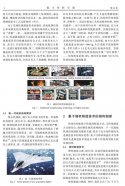 CB1A89A9-8C4C-419A-952E-E7567CA77F67.jpeg116.4 KB · Views: 110
CB1A89A9-8C4C-419A-952E-E7567CA77F67.jpeg116.4 KB · Views: 110 -
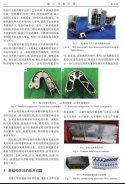 56957D0B-509C-4AA5-B750-68EC29B07D3C.jpeg103.7 KB · Views: 62
56957D0B-509C-4AA5-B750-68EC29B07D3C.jpeg103.7 KB · Views: 62 -
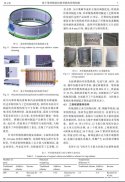 5F0E76F8-39F3-4255-B810-355E4CAACD16.jpeg110.2 KB · Views: 58
5F0E76F8-39F3-4255-B810-355E4CAACD16.jpeg110.2 KB · Views: 58 -
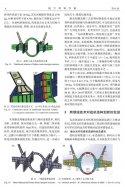 8660CC90-4852-44BE-9FCB-D958569A079F.jpeg119.4 KB · Views: 51
8660CC90-4852-44BE-9FCB-D958569A079F.jpeg119.4 KB · Views: 51 -
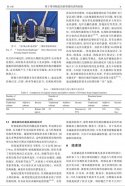 2D7A7148-0A70-4992-8843-269C4384B1D7.jpeg122.4 KB · Views: 108
2D7A7148-0A70-4992-8843-269C4384B1D7.jpeg122.4 KB · Views: 108
Last edited:
I like the flex here. Subtle, very nice.
I like the flex here. Subtle, very nice.
What flex?
Posting a great picture when the previous ones were taken by potatoes and going "looks like [the pitot tube] isn't there", as if the tube's presence or absence is what matters now that we have the first clear shot of a J-20S.What flex?
- Status
- Not open for further replies.

